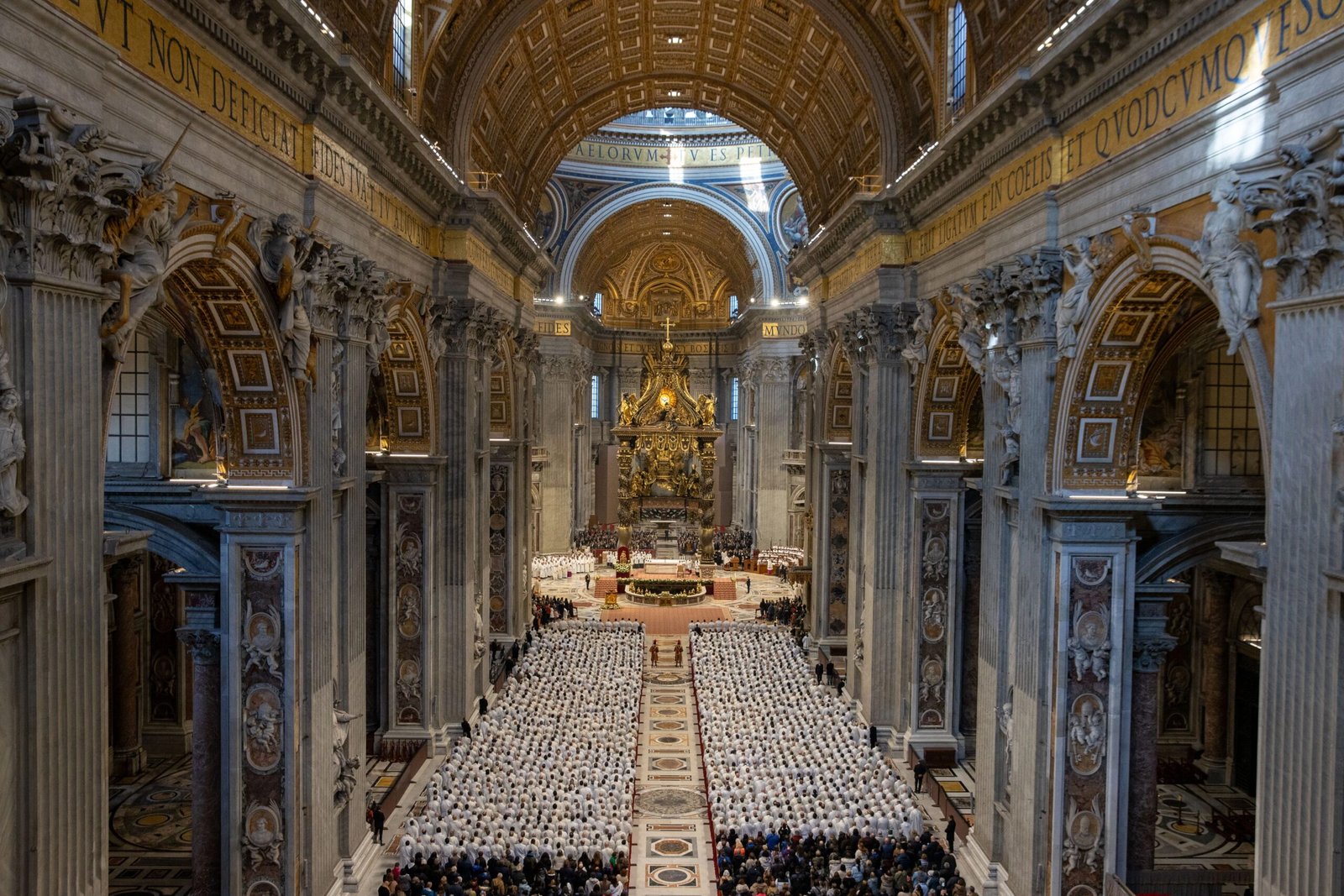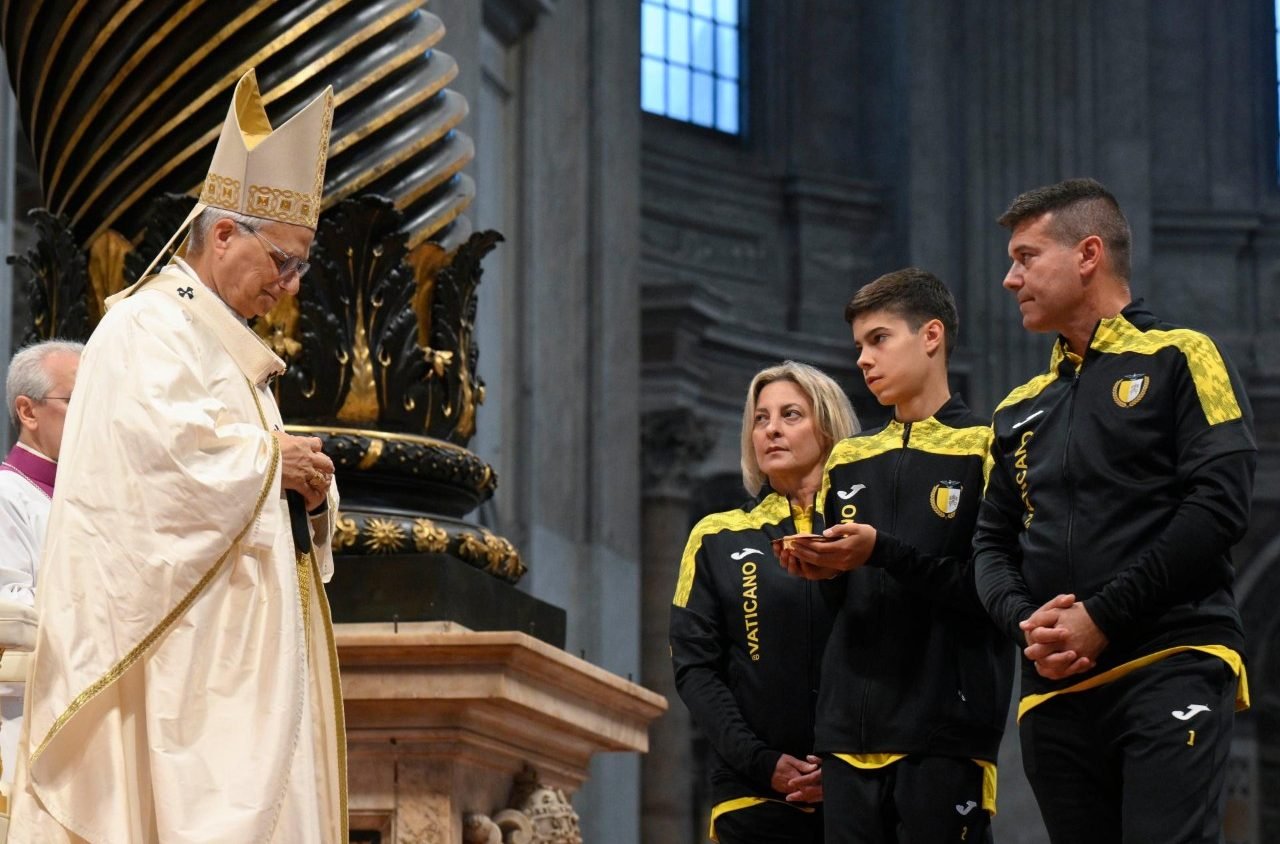Washington, D.C. Newsroom, Jun 14, 2025 /
08:00 am
The number of ordinations of permanent deacons in the United States has decreased by nearly 200 from 2023 to 2024, according to a recent survey.
The Center for Applied Research in the Apostolate (CARA) at Georgetown University published the survey results in its 2025 report “A Portrait of the Permanent Diaconate in 2024.”
According to the report, 587 men were ordained to the permanent diaconate in 2023, but in 2024, the number fell to 393.
The report was created in collaboration with the United States Conference of Catholic Bishops’ (USCCB) Committee on Clergy, Consecrated Life, and Vocations.
The study surveyed ordained permanent deacons who intend to remain deacons, excluding transitional deacons (those who will be ordained to the priesthood).
Conducted from February to May 2025, the survey received responses from 138 archdioceses/dioceses and two archeparchies with bishops and eparchs that belong to the USCCB and maintain an active office of deacons.
The overall response rate was 76%, with a higher response rate among archdioceses/dioceses (78%) than archeparchies/eparchies (22%).
“With the release of this survey, I ask for continued prayers for deacons and for an increase in vocations to the permanent diaconate within the United States,” said Bishop Earl Boyea of Lansing, Michigan, chairman of the USCCB Committee on Clergy, Consecrated Life, and Vocations.
Estimated numbers of U.S. deacons
Since the report did not have a 100% response rate, CARA cannot confirm the exact number of deacons, but it estimated that there were about 20,212 permanent deacons in the U.S. in 2024. This includes approximately 20,022 in the Latin rite and 189 in the Eastern rite.
CARA estimated that about 11,503 permanent deacons were in active ministry in 2024. Including those that did not respond, it is estimated that there are a total of 13,864 active deacons.
During 2024, 393 permanent deacons were ordained, 545 deacons retired from active ministry, and another 361 deacons passed away.
CARA reported that there “are not enough new permanent deacons being ordained to make up for the numbers who are retiring from active ministry and dying each year.”
Of the respondents, the Archdiocese of Chicago had the highest number of permanent deacons (848). The others with the largest numbers included the archdioceses of Atlanta (385), New York (369), San Antonio (361), and Galveston-Houston (316).
The Diocese of Rapid City, South Dakota, had the lowest total number of permanent deacons in 2024 with 43. The others with the fewest deacons were the Diocese of Lexington, Kentucky (77), the Diocese of Duluth, Minnesota (63), the Diocese of Bismarck, North Dakota (94), and the Diocese of Tulsa, Oklahoma (105).
Characteristics of U.S. deacons
(Story continues below)
Subscribe to our daily newsletter
The report found that the large majority of active deacons are currently married (93%). A small number are widowers (4%), and even fewer have never been married (2%).
Almost all of the active deacons (96%) reported that they are at least 50 years old: 18% are in their 50s, 41% are in their 60s, and 38% are 70 or older.
Nearly all responding dioceses and eparchies (96%) have a minimum age of acceptance into permanent diaconate, which on average is 32 years old. Three in five (58%) have a mandatory age for retirement, which is 75 years old on average.
The study found that most active deacons are non-Hispanic and white (74%). The rest of the respondents reported to be Hispanic or Latino (20%), Asian or Pacific Islander (3%), or Black (2%).
More than half (66%) of active permanent deacons have a college degree, 15% of whom also hold a graduate degree in a field related to religion or ministry. About 16% of the deacons had only a high school diploma or GED.
Among permanent deacons who are financially compensated for ministry, 10% are entrusted with the pastoral care of one or more parishes. About 24% work in other parish ministerial positions including religious education or youth ministry, and 18% work in non-ministerial parish positions such as administration, business, or finance.
Academic and post-ordination programs
Almost all of the responding dioceses and eparchies (98%) have a director of the diaconate or a person with a similar title to oversee the ministry — 43% of whom are employed full time.
Nine in 10 dioceses and eparchies (92%) have an active ministry formation program for their deacons. Of these, 27% offer a program in Spanish. Of those that do not have a formation program, 30% are planning to begin one in the next two years.
The majority of the responding dioceses and eparchies (90%) require deacons to take part in post-ordination formation, requiring a median of 20 hours annually. Specifically, 91% of Latin-rite dioceses require continued formation, but none of the Eastern-rite eparchies do.





